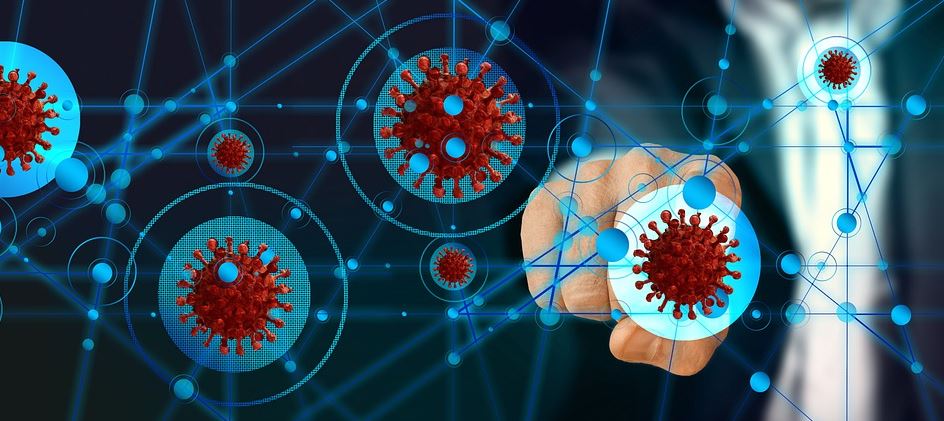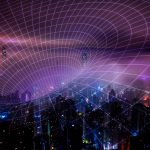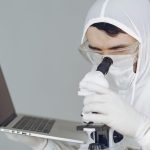However, as these measures were relaxed some people became complacent. Citizens stranded overseas returned home and new daily cases rose to lower double digits. So the government mandated face masks in enclosed public spaces including malls and shops, on public transit and other crowded places. It also warned that if the situation did not improve we may revert to tighter measures.
In one instance, a business owner in Kedah state returned from Sivagangga, India, broke home-quarantine and went to his restaurant. At the time of writing this article, he is believed to have spread the virus to 43 people both directly or indirectly, including passing it to two neighbouring states.
In another example, a couple earned social media notoriety when pictures of them wearing pink wristbands (a potential indication of COVID-19 quarantine breaches) went viral on social media. It was later found they were not wearing pink quarantine wristbands, merely entry passes to a pet café where people interact with pedigree dogs.
Meanwhile, temperature readings of people entering buildings are being measured with hand-held or stand-mounted infra-red thermometers. The results are often recorded manually, along with personal contact details or they are registered with a QR code linked with a contact-tracing app. The app may sound like a practical solution, but it does not read nor record temperatures, which need to be done manually by security personnel or staff members.
Worse still is that the many disparate contact tracing apps, QR-codes and databases operated by various governments and private vendors often result in having incompatible systems and data sets. That makes the task of analysing all of that data, identifying patterns and doing something meaningful with it extremely challenging. Only recently has the federal government mandated the use of the mySejahtera app – a move that will standardise and centralise data within a single system.
At the same time, more than 100 people are being fined every day for violating preventive standard operating procedures.
How the pandemic is accelerating technology change
A recent virtual round table event hosted by mission-critical communications and analytics company, Motorola Solutions, highlighted how these challenges and others are changing the way organisations work in the new era of COVID-19.
The company which serves more than 100,000 customer across 100 countries has observed some major changes in the way that public safety and enterprise organisations work according to its vice president of Technology, Paul Steinberg.

While many organisations were already on the path to sustained technology change, the pandemic supercharged the need for those changes to help limit and contain the virus’s spread. For instance, first responders on the frontline suddenly had to manage their work from a distance and in ‘contact free’ ways to prevent infection. Public safety organisations also had to coordinate their operations remotely – facilitating the need to maintain their critical communication channels while also making greater use of video and software-based technologies to increase safety and productivity for frontline personnel.
The importance of video in creating accountability between officers and citizens as well as capturing rock solid audio-visual evidence cannot be understated. It shows what actually happened, can be securely captured and stored in central databases and provide irrefutable evidence for criminal trials. Used in real time, video can also help responders to make better informed decisions, especially when an emergency or critical event is unfolding.
Coupled with artificial intelligence (AI), video can quickly focus on precise details to find a proverbial ‘needle in the haystack’ – for example- quickly scanning through a sea of people in the city to quickly differentiate COVID-19 quarantine wristbands from other commonly available wristbands. Having that vital piece of information could not only remove unnecessary focus on innocent people, but also help first responders to shift their to focus to the real suspects. Used at the height of a major incident, this technology could not only save time and resources, it could potentially save lives.
In another example provided by Motorola Solutions’ Asia Pacific VP, Steve Crutchfield some police agencies in Australia have deployed automatic licence plate recognition technology in response to the pandemic. With some Australian states including Victoria still battling rising COVID-19 infections, the ability to rapidly scan countless numbers of car license plates in moments helps police officers to rapidly detect which vehicles should be kept away from their borders. The video technology can operate remotely, saving considerable time for police agencies that once had to physically position their officers at the borders to do this work.
Capturing video is one thing, but centralising and integrating it with a variety of other data sources is where it becomes more powerful. By pooling together video security and analytics feeds, logs from mission-critical voice systems and reports shared by members of the public – public safety organisations can can form a more complete picture using the abundant data sources that surround them.
Having the right information means those organisations can place their valuable field resources where and when they are needed most – and that includes deploying them to better manage and contain the spread of COVID-19.
For starters, security cameras powered by AI and advanced video management software can be used to help private and public safety organisations to monitor public compliance. Among the use cases for this technology that Motorola Solutions provides includes video analytics to detect if people are wearing face-masks and adhering to physical distancing practices.
Motorola Solutions’ Steve also believes the value in equipping essential frontline workers with body-worn cameras has grown exponentially throughout the COVID-19 pandemic – not only for providing a direct link to security personnel in command and control centres, but also for deterring acts of physical aggression – especially when citizens know they are being filmed.
The growing need for integrated solutions
As it looks to a future beyond COVID-19, Motorola Solutions says many of the environmental changes that were accelerated by the pandemic will only continue to evolve.
To combat new and emerging threats to safety while also keeping their own personnel safe, public safety and enterprise organisations will need to embrace more forms of innovation.
The company describes what it sees as a ‘mission critical ecosystem’ of technologies that will evolve to serve organisations worldwide.
This public safety ecosystem centres around the idea that emergency services and citizens can share more data in order to keep communities safe. For example, in the future it will be commonplace for emergency services

to take more than just verbal information from members of the public over a phone line. Rich multimedia content including images and video from what citizens see happening around them will help to provide a new layer of intelligence for safety.
Meanwhile, the capabilities of video security & analytics platforms, mission-critical voice communications and command centre software will all continue to evolve.
The ecosystem Motorola Solutions envisages is also one of convergence – where several government agencies can communicate and collaborate, where public and private services and critical infrastructures work together and emerging 5G cellular technologies bring faster ‘speeds and feeds’ and greater capabilities to mobile workers in the field.
We’re not talking about consumer grade tech
Imagine a typical first responder’s workday. It can be mostly stress free and then suddenly interrupted by periods of intense stress that may adversely affect their cognitive abilities including sight, hearing, speech, fine motor skills and physical response times. Ironically, that’s where they need to rely on technology the most but are least able to use it.
Motorola Solutions is already developing technologies based on ‘natural language processing’ whereby AI ‘listens’ to the typical emergency calls from the public fed into public safety control rooms and automatically transcribes them into searchable text which it stores for future reference.
Also, video aided by analytics and AI is being used to alert control room workers to key anomalies so they can make better and faster decisions in partnership.
Looking ahead
They say necessity is the mother of invention and the urgency to develop solutions to detect, mitigate and contain the spread of COVID-19 has developers working at a frantic pace. However, the rapid roll out of technologies used to combat the pandemic today will have a shelf life that goes well beyond COVID-19. The use of video analytics, AI, intelligent software solutions as well as mature, mission critical voice communication, will all continue to evolve and provide greater insights to help organisations work more safely and productively.
While none of us wanted a global pandemic to generate these changes, we have already gained much knowledge about how these technologies can be applied to make our communities safer and more resilient for the future.








